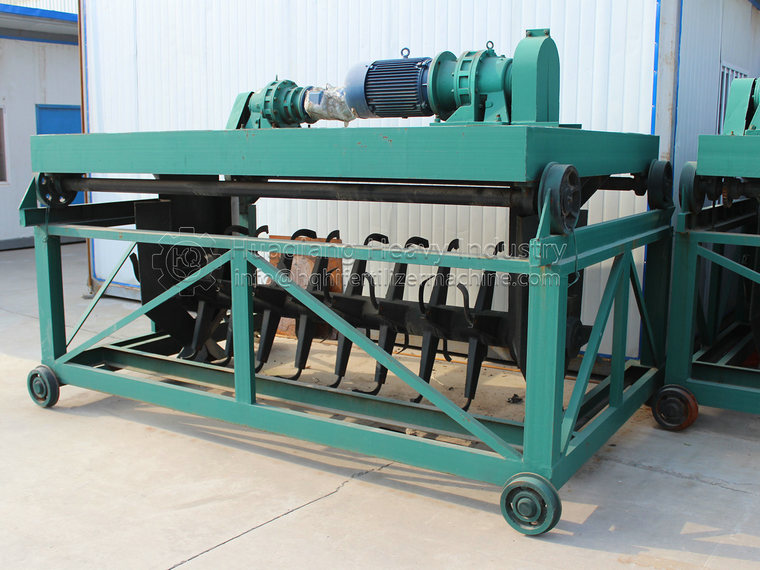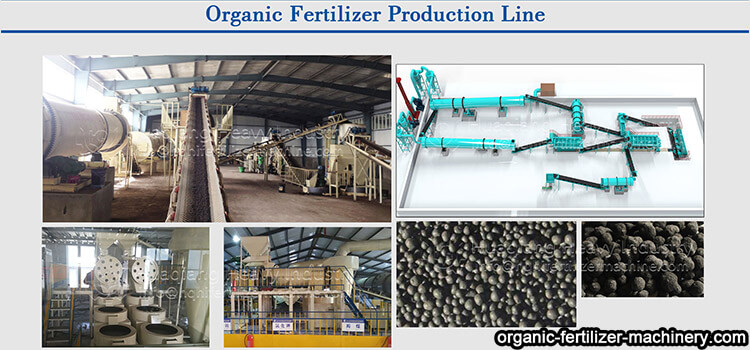The production of Organic fertilizer is a composting process that places materials in the fermentation tank and dumps, mixes and breaks them through the tank type dumping machine to ferment, decompose and degrade materials. Compared with static composting, it is easier to obtain stable product properties and has better odor control effect. The overall level of automation can be higher, saving space.
Deep trough Organic fertilizer fermentation equipment is to build two walls on the flat ground to form one or more fermentation tanks. The trough dumper/trough dumper works on the fermentation tank, usually driven by a motor. Due to the high-speed rotation of the drum of the slot type tipping machine, the blades on the drum crush, mix and stir the fermented materials in the fermentation tank, and at the same time, the materials are flipped backwards by the drum and stacked loosely. Through the electric drive device, the Organic fertilizer tipping machine can realize the automatic lifting and rotation of the drum. The tipping machine can move from one fermentation tank to another through a moving crane, and multiple fermentation tanks can use a tank type tipping machine.
Use and characteristics of deep trough Organic fertilizer fermentation equipment:
1. The tipping span of the slot type tipping machine can reach 4-12 meters, and the fermentation cycle is about 15 days. The length of the fermentation tank depends on the situation. It is possible to feed at the inlet every day and discharge at the other end. Feed and process daily. When the flipping machine needs to change the flipping section after flipping, the stirring dragon can be raised to quickly run the equipment to the flipping section.
2. The innovation of this machine is to fully utilize the deep pool design of underground space and the new technology of long-distance dumping, and to make the harmless treatment of organic waste on a large scale become a reality with limited ground area.
3. Compact structure, advanced technology, and the use of some beneficial microorganisms can promote the rapid decomposition of organic waste such as livestock manure. Adopting a unique tank type continuous aerobic fermentation technology, organic waste is quickly decomposed, dehydrated, sterilized, and deodorized, achieving the goal of harmless, resourceful, and reduced treatment, with low energy consumption and stable product quality.
4. The intelligent automatic control of the fermentation material turnover process, under the action of vertical and horizontal walking mechanisms, causes a certain turnover displacement of the fermentation material in the pool, and the material moves back in a continuous and equal distance gradually in the pool, thus forming a continuous aerobic fermentation process. The stirring knife not only flips evenly and oxygenates, but also has the function of crushing materials.
5. The electronic control system of the equipment is advanced and reliable, easy to operate, equipped with remote control, automatic, and manual. After the main engine starts running, turn the rotation button to the “automatic” state and turn on the walking button, and the throwing machine starts working. The flip operation trolley flips horizontally to one side and touches the limit switch. The flip operation trolley stops walking, and the entire equipment travels longitudinally for 3-5 seconds (about 250-300 millimeters). After that, the flip operation trolley starts to flip horizontally to the other side, achieving the effects of flip and oxygen filling during round-trip work.
.jpg)

.jpg)

.jpg)

.jpg)
